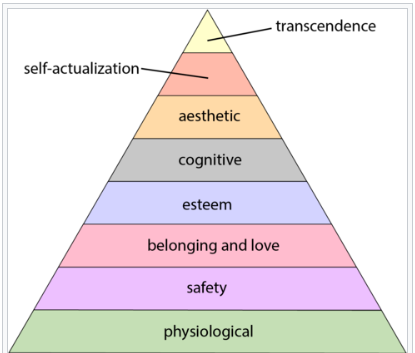Maslow's hierarchy of needs is a motivational theory in psychology that proposes that human needs can be arranged in a hierarchical order, with the most basic needs at the bottom of the hierarchy and the more advanced needs at the top. The hierarchy is often depicted as a pyramid, with the most basic needs at the bottom and the higher needs at the top.
Photo courtesy of Wikipedia
The five levels of Maslow's hierarchy, from bottom to top, are:
1. Physiological needs: These are the most basic needs, such as food, water, shelter, warmth, and sleep. These needs must be met in order for a person to survive.
2. Safety needs: Once the physiological needs are met, the next level of needs is safety and security. This includes physical safety, emotional security, financial stability, and protection from harm.
3. Love and belonging needs: The third level of needs involves social interaction and relationships. This includes the need for love, affection, belonging, and connection with others.
4. Esteem needs: The fourth level of needs involves self-esteem, self-respect, and the need for recognition and respect from others.
5. Self-actualization needs: The top level of needs is self-actualization, which involves the realization of one's full potential, personal growth, and the pursuit of one's passions and goals.
Maslow's theory suggests that higher needs cannot be fully realized until lower needs are met. Individuals must first satisfy their basic physiological and safety needs before they can focus on social, esteem, and self-actualization needs. The theory has been widely influential in psychology, education, and business, and has been used to inform strategies for personal growth, motivation, and goal-setting.
Find me on Twitter @JerryMooney


